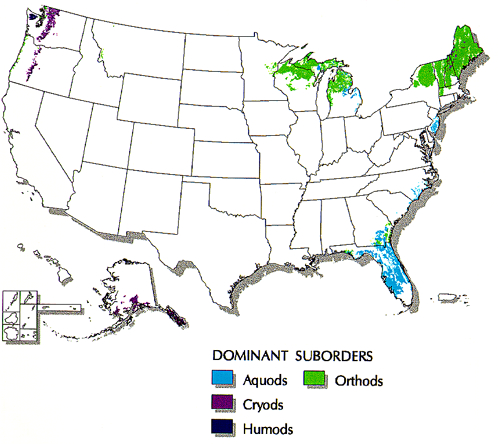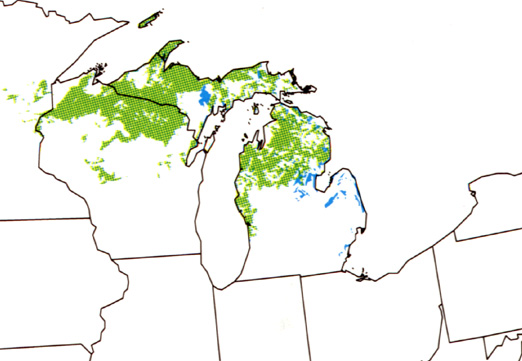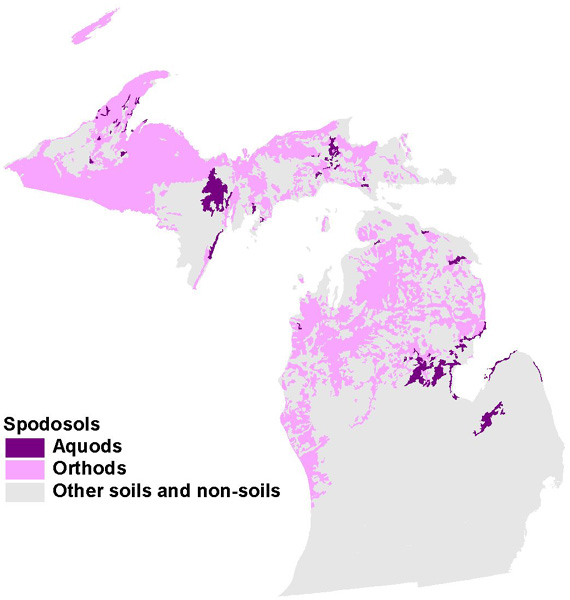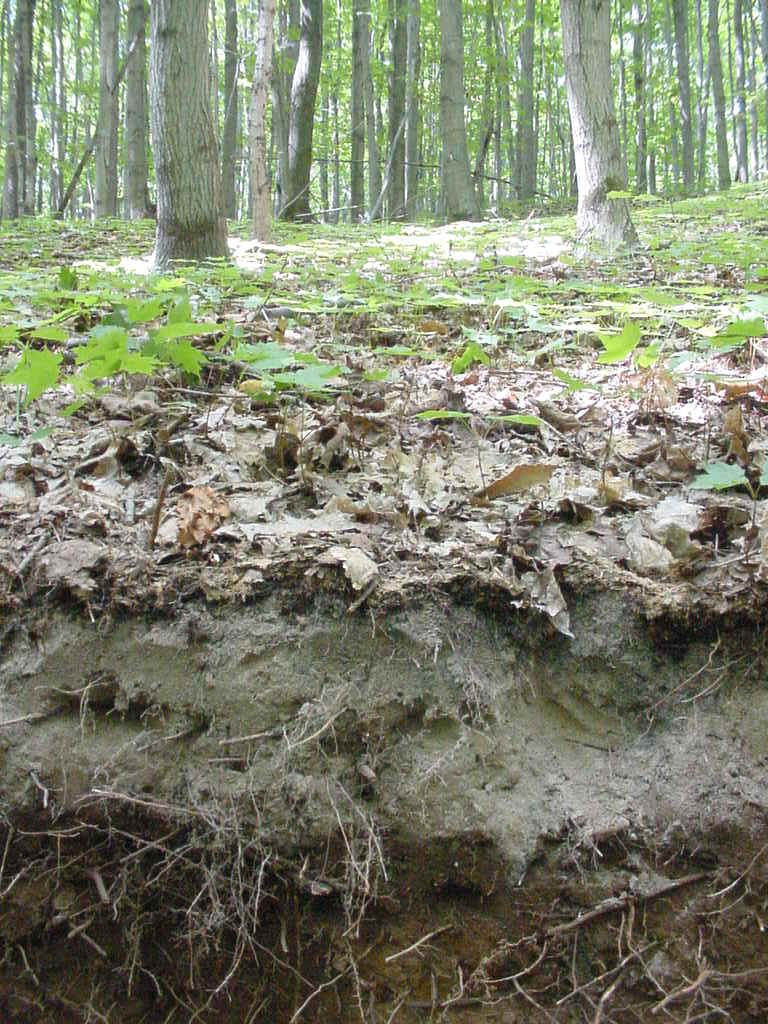SPODOSOLS
Spodosols are one of the eleven soil major orders in the world, and Michigan has some of the better ones around. These soils form in sandy materials, under climates where large amounts of water infiltrate into the soil at one or more times of the year. In Michigan, that "time of year" is during the snowmelt period, in spring. The soils form under forest, usually mixed forest types (maple, pine, hemlock, birch). They are useful for forestry and recreation.
Spodosols are acid soils characterized by a subsurface accumulation of humus and Al &
Fe oxides. These soils are very photogenic and typically have a light-colored E horizon
overlying a reddish-brown spodic horizon. Spodosols often occur under coniferous forest in
cool, moist climates.
Spodosols are prevalent in the northern parts of the Great Lakes region
(see map below). In fact, Spodosols dominate the northern two-thirds of Michigan. A
considerable amount of leaching has taken place in this area so humus and minerals,
particularly aluminum and iron have been translocated from the top, or A horizon, into the
B horizon. The color of the soil is often gray, which indicates a lack of humus because
pine is the dominant natural vegetation for most of this region. Pine needles do not break
down into humus easily and lie undecayed on the forest floor. The short growing season
also slows the biological and physical breakdown of the pine needles and other vegetable
matter. The exact nature of the soil found in any area will depend upon the variety of
factors mentioned earlier.

The border between the Spodosols and the Alfisols in southern Michigan
separates the dominant areas of agriculture to the south from the agriculturally poor
areas to the north. Much of the northern area has sandy soil that derives from materials
laid down by wasting glaciers. Additionally, there are many poorly drained soils with
thick marsh vegetation.
![]()
There are exceptions to this generalization because of some local
conditions that give rise to greater fertility and special types of agricultural
production. Examples are the important cherry areas in the vicinity of Grand Traverse Bay
and further south in the Hart-Shelby area of Oceana County. These concentrated fruit belts are related to factors such as sandy loam soils and
their nearness to Lake Michigan. The lake retards the first frost in the fall and also
keeps the area cool in the spring until there is considerable assurance that frost will
not recur.


In Michigan, they are found north of about Clare, where the landscape becomes
"sandier". This distribution occurs because the soils form best in sandy
sediments, and in places where snow is deep and summers are cool. The map below
shows where Spodosols are found, with the darker purple areas being the wetter Spodosols
(Aquods).

Spodosols are easily spotted by their white E horizon, which has experienced intense translocation of Fe, clay, aluminum, and organic matter. All that remains are uncoated sand grains, which give this horizon its white color. Below, the brown or black Bh or Bs horizon is the zone where these materials have accumulated, and the sand grains are heavily coated with this "illuviated" (means "washed in") material.

Formed mostly of underlying sandy parent materials, spodosols tend to be strongly leached,
with low fertility and limited water storage capacity. Many areas where these soils occur
have not been cleared of trees for farming. Large tracts of spodosol border the tundras of
North America and Eurasia. Characteristic of these soils are subsurface horizons in which
amorphous materials composed of organic matter, aluminum, and iron have accumulated. The
heavy application of fertilizers and lime has enabled cultivation of grains, potatoes,
berries, and silage corn (maize) on spodosol soils in the cool climate of the
north-central United States.
Parts of the text on this page have been modified from L.M. Sommers' book
entitled, "Michigan: A Geography".
This material has been compiled for educational use only, and may not be reproduced without permission. One copy may be printed for personal use. Please contact Randall Schaetzl (soils@msu.edu) for more information or permissions.